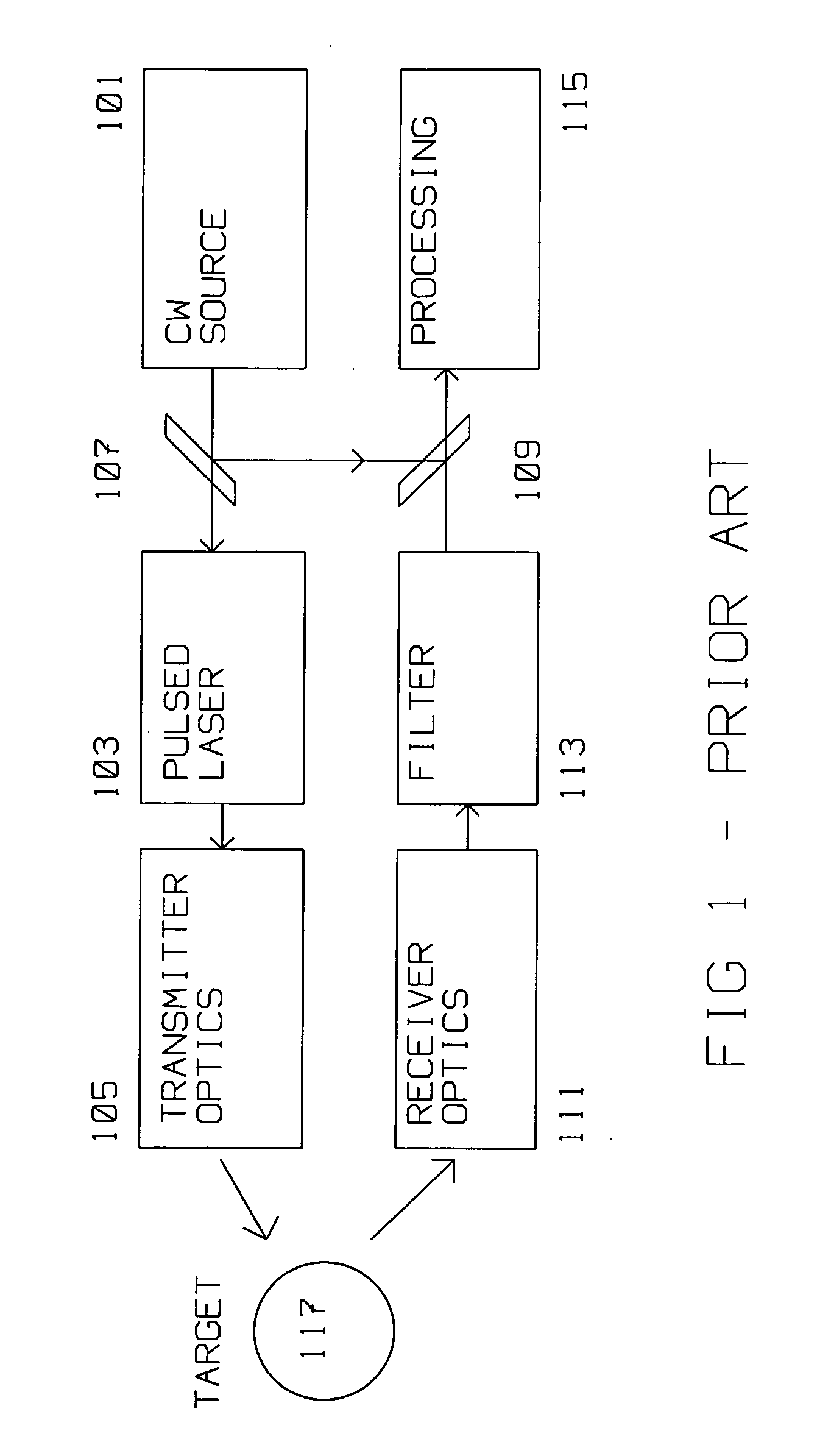Rapid scan LADAR 3D imaging with compact digital beam formation
a 3d imaging and digital beam technology, applied in surveying, distance measurement, instruments, etc., can solve the problems of limited solid angle coverage, limited angular coverage, and long ladar search time of a volum
- Summary
- Abstract
- Description
- Claims
- Application Information
AI Technical Summary
Benefits of technology
Problems solved by technology
Method used
Image
Examples
Embodiment Construction
[0018]This disclosure introduces the concept of calibrating and distributing a single LADAR local oscillator signal to a plurality of (optical) lenses and associated detectors to facilitate parallel operation of the plurality of lenses for target detection and tracking within a volume.
[0019]FIG. 1 shows the typical prior art LADAR heterodyne system. Continuous Wave (CW) Source 101 (a local oscillator), operating at a frequency, after passing through Beam Splitter 107, modulates Pulsed LASER 103 for amplification. The output from Pulsed LASER 103 is processed by Transmitter Optics 105 and directed to Target 117. Target 117 reflects part of the LASER energy from Transmitter Optics 105 to Receiver Optics 111. The output of receiver optics 111 is filtered for parameters of interest in filter 113.
[0020]A portion of CW Source 101 signal is routed by Beam Splitter 107 to Detector 109, a photo detector sensitive to energy from pulsed laser 103. Typically, CW Source 101 is adjusted to corres...
PUM
 Login to View More
Login to View More Abstract
Description
Claims
Application Information
 Login to View More
Login to View More - R&D
- Intellectual Property
- Life Sciences
- Materials
- Tech Scout
- Unparalleled Data Quality
- Higher Quality Content
- 60% Fewer Hallucinations
Browse by: Latest US Patents, China's latest patents, Technical Efficacy Thesaurus, Application Domain, Technology Topic, Popular Technical Reports.
© 2025 PatSnap. All rights reserved.Legal|Privacy policy|Modern Slavery Act Transparency Statement|Sitemap|About US| Contact US: help@patsnap.com



